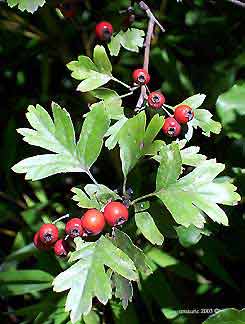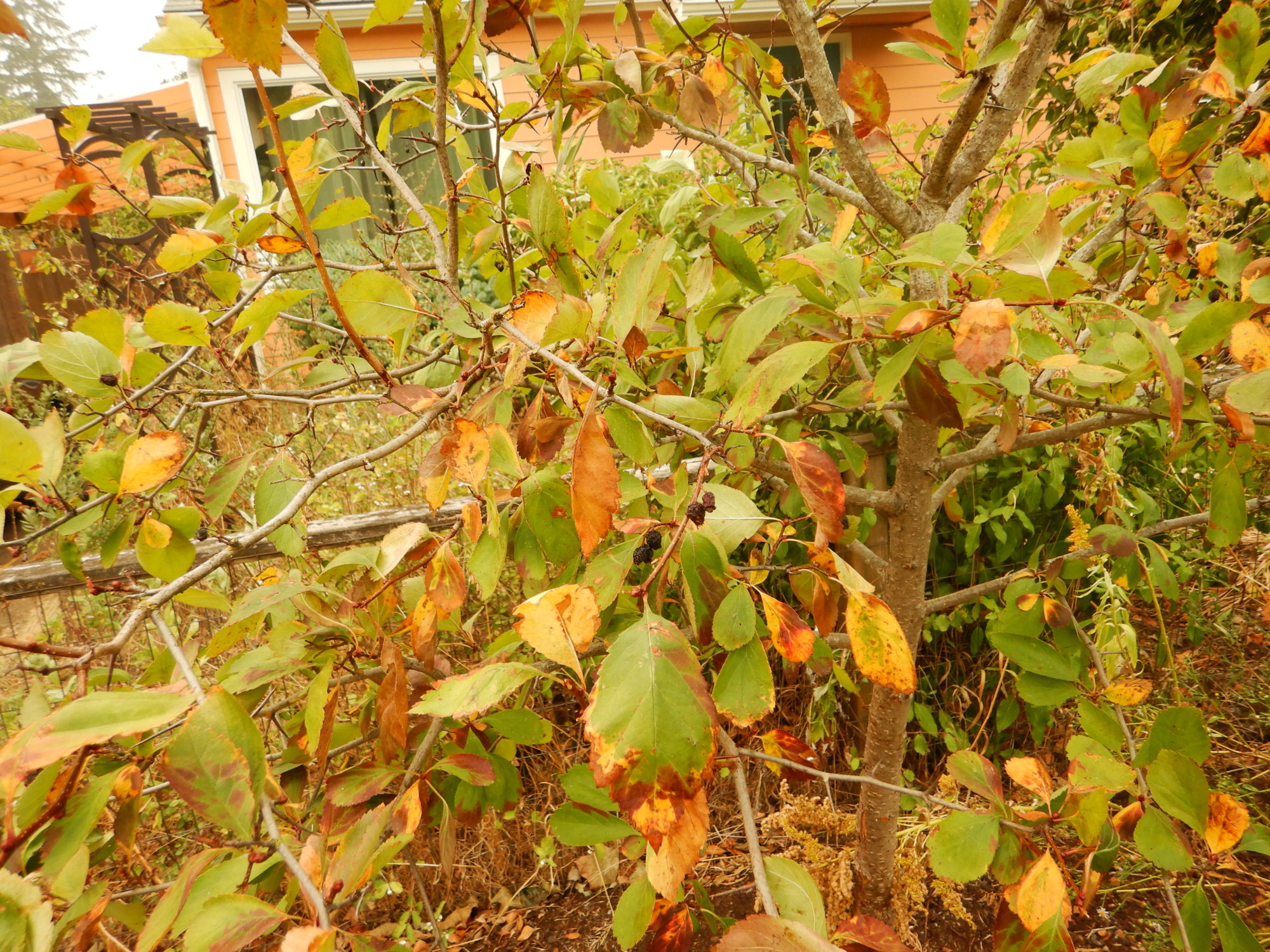Introduced species: English hawthorn (Crataegus monogyna)
Characteristics: English (or common) hawthorn is a broadly spreading shrub or small tree, typically up to 6 m (20’) tall, with a dense crown. The bark is pale gray or dull brown, and may have vertical orange cracks. The younger stems bear sharp thorns, 1 to 1.5cm long. The leaves are 2-4 cm (1-2 in) long and deeply lobed (three or more), sometimes almost to the midrib, with the lobes spreading at a wide angle; they can almost resemble small oak leaves. The upper surface is dark green above and paler underneath. Clusters of 5 to 25 white flowers, 1 cm wide with five petals, are produced in late spring (May/June). Small (up to 1 cm), dark-red, oval fruits are borne in autumn, lasting through late winter; these are edible raw, and also used in jams, jellies, and syrups. (Always triple-check your ID before eating any wild plant.) English hawthorn was introduced to the US from its native range (Europe and northern Africa) in the 1800s.
Spread: English hawthorn spreads primarily by seed, with birds and fruit-eating mammals being the main dispersal agents. It can form dense thickets, displacing native plants and making the movement of large animals difficult (which accounts for its use as a hedge plant). It is invasive in riparian areas, abandoned fields and pastures, prairies, oak woodlands, and forested habitats.
Control: Small infestations of young plants can be hand pulled or weed-wrenched out; the entire crown and main roots must be removed to prevent regrowth. Larger plants are very difficult to remove; cutting them down often encourages suckers to sprout from the extensive root system, and the cut stump is likely to re-sprout unless (or even if) treated with a concentrated herbicide.
Native replacement (and a note): Do not confuse English hawthorn with the native black hawthorn (C. douglasii). The leaves of this native species are mostly to entirely unlobed (vs the deep lobes of the English), and the fruit is dark purple-black. Hybridization of C. monogyna with C. douglasii has produced specimens with characteristics intermediate between the two (except the fruits, which resemble the native species). Black hawthorn will grow in the same habitats favored by English hawthorn, without aggressively spreading and forming thickets. (Note that the native hawthorn’s thorns are quite formidable, sometimes more than 1” long, so this might not be an appropriate tree to plant in locations with lots of human traffic.)


